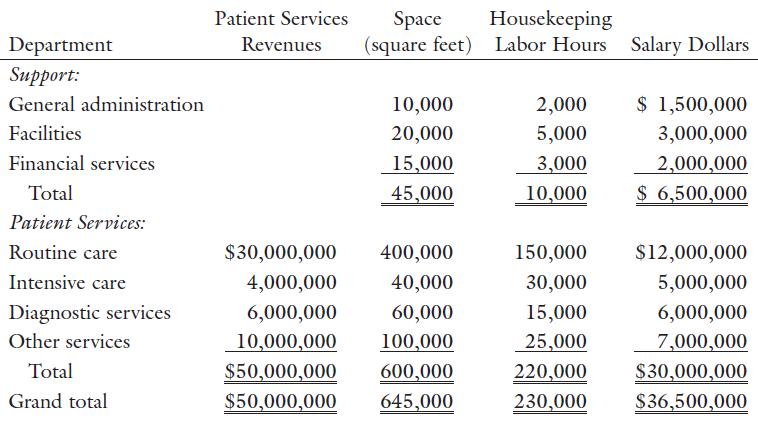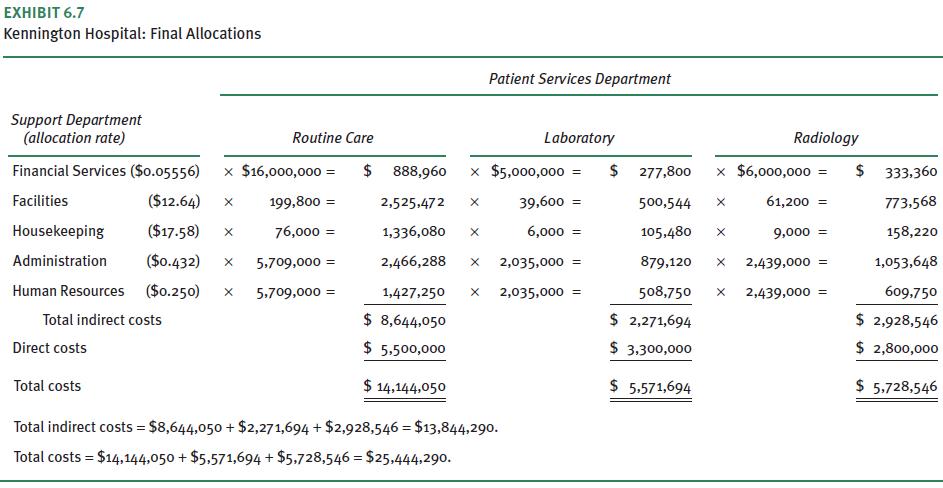Return to the direct method of cost allocation and use the same cost drivers as specified in
Question:
Return to the direct method of cost allocation and use the same cost drivers as specified in problem 6.4 for the general administration and facilities departments. However, assume that $2,000,000 of financial services costs is related to billing and managerial reporting and $1,000,000 is related to payroll and personnel management activities.
a. Devise and implement a cost allocation scheme that recognizes that the financial services department has two widely different functions.
b. Is there any additional information that would be useful in completing the first part of this problem?
c. What are the costs and benefits to St. Benedict’s of creating two cost pools for the allocation of financial services costs?
Problem 6.4
Assume that the hospital uses salary dollars as the cost driver for general administration, housekeeping labor hours as the cost driver for facilities, and patient services revenue as the cost driver for financial services. (The majority of the costs of the facilities department stem from the provision of housekeeping services.)
a. What are the appropriate allocation rates?
b. Use an allocation table similar to the one used for problem 6.3 to allocate the hospital’s overhead costs to the patient services departments.
c. Compare the dollar allocations with those obtained in problem 6.3. Which departments are allocated more overhead costs?
Which are allocated less?
d. Which of the two cost driver schemes is better? Explain your answer.
St. Benedict’s Hospital has three support departments and four patient services departments. The direct costs to each of the support departments are as follows:
Selected data for the three support and four patient services departments are shown below:
Problem 6.3
Assume that the hospital uses the direct method for cost allocation.
Furthermore, the cost driver for general administration and financial services is patient services revenue, while the cost driver for facilities is space utilization.
a. What are the appropriate allocation rates?
b. Use an allocation table similar to exhibit 6.7 to allocate the hospital’s overhead costs to the patient services departments.
St. Benedict’s Hospital has three support departments and four patient services departments. The direct costs to each of the support departments are as follows:
Selected data for the three support and four patient services departments are shown below:
Exhibit 6.7
Step by Step Answer:

Gapenski's Healthcare Finance An Introduction To Accounting And Financial Management
ISBN: 9781640551862
7th Edition
Authors: Kristin L. Reiter, Paula H. Song





